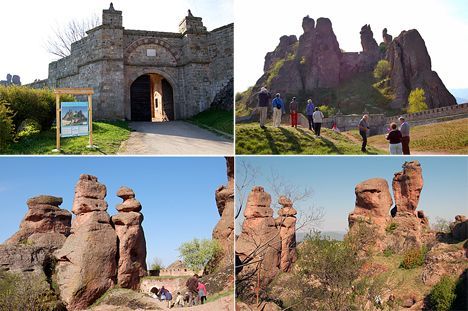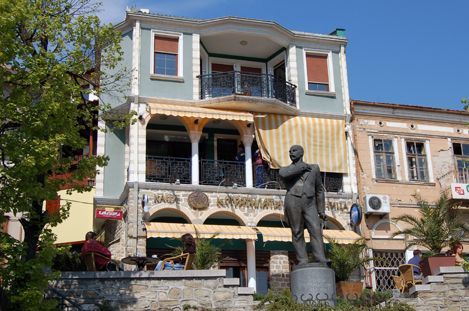- Revenue Cycle Management
- COVID-19
- Reimbursement
- Diabetes Awareness Month
- Risk Management
- Patient Retention
- Staffing
- Medical Economics® 100th Anniversary
- Coding and documentation
- Business of Endocrinology
- Telehealth
- Physicians Financial News
- Cybersecurity
- Cardiovascular Clinical Consult
- Locum Tenens, brought to you by LocumLife®
- Weight Management
- Business of Women's Health
- Practice Efficiency
- Finance and Wealth
- EHRs
- Remote Patient Monitoring
- Sponsored Webinars
- Medical Technology
- Billing and collections
- Acute Pain Management
- Exclusive Content
- Value-based Care
- Business of Pediatrics
- Concierge Medicine 2.0 by Castle Connolly Private Health Partners
- Practice Growth
- Concierge Medicine
- Business of Cardiology
- Implementing the Topcon Ocular Telehealth Platform
- Malpractice
- Influenza
- Sexual Health
- Chronic Conditions
- Technology
- Legal and Policy
- Money
- Opinion
- Vaccines
- Practice Management
- Patient Relations
- Careers
Bulgaria: Fortresses, Folk Dancing and John the Baptist
Our travel columnists tour the sights of Bulgaria along the Danube, including the island of Sveti Ivan, a 5th century monastery where just this month archaeologists said they had found the remains of John the Baptist.
Photography by the authors.
What do Americans know about Bulgaria? Not much. Some of the Dracula stories touch this country that lies across the Danube River south of Romania. We have tried some of its foods. Bulgarian caviar. Tarator, a Bulgarian cold soup (or, as friends of ours label it, “liquid saladâ€). A cheese called sirene and, of course, yogurt -- Bulgarians claim it originated in their country 3,000 years ago.
What else do we know? Well it has a warm, friendly people who have celebrated a century of independence from the Ottoman Empire. It also has a Cyrillic alphabet that defies understanding and surely hurts tourism.
Bulgaria is not the easiest country for Americans to travel around in, mostly because of the language. However, the river boats that ply the Danube are a great choice for visiting the northern part of the country. Many of those boats start in Vienna and go all the way through Eastern Europe until they sail into the Black Sea close to Varna.

Vidin, coming up first on the Bulgarian segment of our Uniworld River Countess cruise, shows us how little we know of this Eastern European country. Vidin’s long history both puzzles and fascinates us. A memorial to the victims of Communism greets us as we tie down on the south bank of the Danube. Like most of Europe, this country surely suffered over the centuries. Yet at what cost? Records kept at the capital, Sofia, attempt to give the answer with details as a public acknowledgement. Priest Simeon Dankin, for example, in 1944 “was executed without a trial†-- one of 6,385 names on record.

For more than 2,000 years, Vidin has been seen as an important port on the Danube River -- a prize to be captured on the whim of any neighboring country. If we were to round up the usual suspects, it would include the Celts, Romans, Byzantines, Hungarians, Slavs, Ottomans and Serbs. Thus it’s no surprise to find a huge medieval fortress in the city, Baba Vida. Named after Vida, the eldest daughter of a renowned 10th century king, it is the only fully preserved castle in the country. “The name means ‘Granny Vida,’ †our guide says, “Her two other sisters wasted their inheritance on drunkard husbands, but Vida had the sense not to marry so she had the money to build a citadel.â€

We are sitting in the courtyard of Baba Vida now watching young people perform Bulgarian folk dances. They are so charming it helps eradicate the memory of laments, words carved on the walls of the dungeons below by their prisoners over the centuries.

After a 35 mile-drive south of Vidin, we again stumble into history: The 4th century fortress of Belogradchik built on top of an earlier Roman settlement. Beyond the entrance lies the celebrated Belogradchik Rocks. Formed of multicolored eroded and strangely-shaped Triassic sandstone they are perhaps Bulgaria’s equivalent of our Bryce Canyon or Monument Valley. Whereas we name a conglomerate in Monument Valley “John Wayne’s Boot,†the Bulgarians are less into pop culture and call their shapes Adam and Eve, Sphinx and Nun, for example.
We continue downstream to Rouse then make the brief bus trip to the northern foothills of the Balkan Mountains, then on to the Yantra River and the medieval town of Veliko Turnovo (and yet another fortress!). This is our guide’s home town. “My Turnovo has been dated by historians to the 4th century BC,†she says. “In the 13th and 14th centuries, the fortress here became our country’s capital.†We catch the eye of a British couple who had told us the story of their “ABC†tour of France -- ABC meaning “Another Bloody Cathedral.†We mouth “ABF,†or Another Bloody Fortress, and all smile like conspirators.

A forbidding figure looks down on us: We thought at first it was Lenin but the date of death 1895 didn’t work. We waited until a young man was walking past with a briefcase, held out a hand and said, “Dobro utro,†our only Bulgarian phrase. We were going to ask if he spoke English, but he smiled and said, “That’s ‘good morning,’ but actually it’s now afternoon. How may I help you?â€
The statue was of Stefan Stambolov, he told us. “He was our prime minister – like your Winston Churchill,†he said, assuming we were British. “In fact, he was called ‘the Bulgarian Bismarck.’ Bismarck, however, lived to be twice Stambolov’s age when he died because this man (pointing at the statue) was assassinated at the age of 41. He was attacked by four men. Stambolov shot one but the other three stabbed him repeatedly. He died the next day.†We thanked our helpful host as he walks away.

We drift back to our bus and make the brief trip to Arbanasi. This popular tourist village is more interested in selling us mementoes than scaring us with its history -- although it has its own stories from the past. “Many wealthy Bulgarians – aristocrats had their homes here, 17 noble families in 1790,†our guide says, “and their fortified homes today have become a great attraction for visitors.†The homes needed to be fortified -- the village was pillaged by neighboring bandits as often as northern Scottish towns were ravaged by the Vikings.
The River Countess bring us on to Balchik and its botanic garden. We believe we can almost smell the Black Sea. Our days on the Danube are, unfortunately, numbered. Balchik is so beautiful a coastal resort that the Romanian Queen Maria built a summer palace there. The land became Bulgarian after 1940, when borders changed, but the palace and the garden of Romania’s beloved queen is still open to visitors.
The palace interior seems spartan. Its decorations include faded photographs of the queen and her painting “Liliums.†Most of her personal effects have ended up in the Maryhill museum that sits on a bluff overlooking the Columbia River in Washington State.

Maria is an interesting story for historians. She was the granddaughter of the U.K.’s Queen Victoria and the granddaughter of Tsar Alexander II of Russia. She was gifted and beautiful. The future King George V of Britain fell in love with her but, at the age of 17, she married the nephew of the king of Romania for whom “her distaste grew to revulsion.†(He became King Ferdinand.) She took up art, writing -- and lovers -- and died at the age of 62 in 1938. She’s a most refreshing character: she even served as a Red Cross nurse during World War I.

A short drive leads to Varna, a city on the coast of the Black Sea with a population of about one third of a million. About 95 miles to the south lies Sozopol and, a mile offshore, the island of Sveti Ivan, the 5th century monastery where government archaeologists announced in August 2010 they had found the remains of John the Baptist. Varna has its famous Archaeological Museum that exhibits “The Gold of Varna.†This is thought to be the oldest gold treasure in the world, even though it wasn’t discovered and dug up until 1972. The cache dates back to 4600 BC. The museum has antique paintings, extensive coin collections and Thracian tombstones that date back four to five thousand years to the Bronze Age.

All this exploring is hungry work, but fortunately next on the passengers’ itinerary is lunch and our crew has chosen Mr. Baba’s, a local restaurant popular with tourists on a dry-docked sailing ship. It’s fun and creates a welcome release from some of the heavy stuff we’ve seen.

Dinner that night on our river boat was equally pleasant. On a small ship, passengers get to dine with the captain. We’ve sailed with Capt. Jord Zwaal before on the same ship, and dining with him as our cruise reaches its destination reinforces our lazy pleasure, our contentment with river boat cruising on the ancient rivers of Europe.
The Andersons, who live in San Diego, are the resident travel & cruise columnists for Physician's Money Digest. Nancy is a former nursing educator, Eric a retired MD. The one-time president of the New Hampshire Academy of Family Practice, Eric is the only physician in the American Society of Travel Writers. He has also written five books, the last called The Man Who Cried Orange: Stories from a Doctor's Life.
